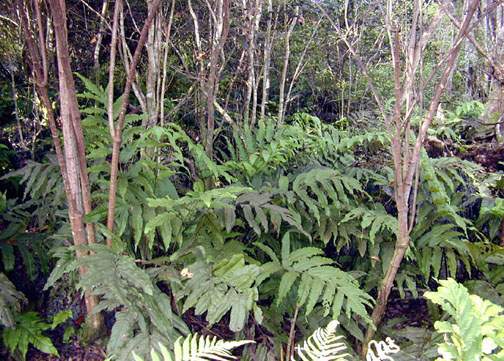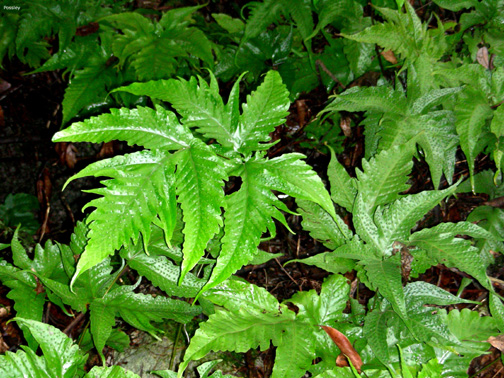Weed removal efforts DO pay off!

If you have ever owned a garden, volunteered in one, or particpated in a volunteer work day, you may be an experienced weed-puller. As you yanked weed after weed, did you wonder whether the sweat, sore muscles, and dirty jeans were all for nought? Maybe you thought “This is impossible!!!” Well the Fairchild Conservation Team can attest that as long as the project area is retreated for several seasons, weed eradication IS possible, and native vegetation DOES recover. Persistence pays off. Our efforts to remove an invasive fern from Miami’s Bill Sadowski Park illustrate this point quite nicely.

In 2003, biologists from Fairchild and Miami-Dade County teamed up to remove the invasive, non-native fern Tectaria incisa (incised halberd fern) from Bill Sadowski Park. Tectaria incisa grew intermixed with rare native fern species, including Tectaria heracleifolia (broad halberd fern)– a fern in the same genus that looks very similar to the non-native. Together, we learned to distinguish these two Tectaria species and then trained Fairchild staff, Miami-Dade staff, and volunteers (from both Fairchild and the Dade Chapter of the Florida Native Plant Society) to recognize the differences between them.

That first year, we held six work days and enlisted the help of several dozen volunteers to hand remove individual ferns. Since then, we have retreated the area every winter. The results of our efforts have been dramatic and positive. Currently, only one or two work mornings per year are needed to maintain the T. incisa at low levels. Complete eradication is not possible in the near future because new T. incisa plants continue to recruit. Yet, each year, our workload decreases.
In 2010, we held just one workday to keep the T. incisa in check. On February 23rd, we were interested to see that the non-native Tectaria was damaged (but not dead) from Miami’s record-cold January temperatures, while the native species was unharmed. It seems even mother nature is pitching in to the efforts now. Not only did she frost the T. incisa (a native of South America), she has been helping all along, as native species– many of them rare ferns– move into the bare areas where T. incisa once grew.
To all the volunteers who helped in these removal efforts, a sincere THANK YOU! If you would like to visit Bill Sadowski Park (located in Palmetto Bay), click here for more information.
–Jennifer Possley
